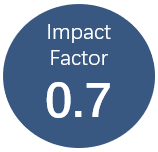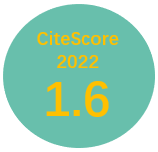For whom the bell tolls: Road safety effects of tolls on uncongested SCUT highways in Portugal
Vol 4, Issue 2, 2020
VIEWS - 707 (Abstract) 364 (PDF)
Abstract
Keywords
Full Text:
PDFReferences
Albalate D (2011). “Shifting death to their alternatives: The case of toll motorways”. Journal of Transport Economics and Policy, 45(3): 1–23.
Albalate D and Bel G (2012). “Motorways, tolls and road safety: Evidence from Europe”. SERIEs, 3: 457–473. https://doi.org/10.1007/s13209-011-0071-6.
Angrist JD and Pischke J-S (2008). Mostly Harmless Econometrics: An Empiricist’s Companion. Princeton, NJ, USA: Princeton University Press.
Bertrand M, Duflo E and Mullainathan S (2004). “How much should we trust differences-in-differences estimates?” Quarterly Journal of Economics, 119(1): 249–275. https://doi.org/10.1162/003355304772839588.
Bieckel P, Friedrich R, Burgess A, et al. (2006). “Proposal for harmonised guidelines”. HEATCO—Developing Harmonised European Approaches for Transport Costing and Project Assessment, Deliverable 5, Contract No. FP6-2002-SSP-1/502481. Brussels, Belgium: European Commission.
Currie J and Walker R (2011). “Traffic congestion and infant health: Evidence from E-ZPass”. American Economic Journal: Applied Economics, 3(1): 65–90. https://doi.org/10.1257/app.3.1.65.
Dias LL (2015). Pagamentos de Portagens nas Ex-SCUT—Qual o Impacto na Sinistralidade Rodoviária? [Toll Payments at Ex-SCUT—What is the Impact on Road Accidents?] Lisbon, Portugal: Faculdade de Ciências Socias e Humanas, Nova University Lisbon.
Donário AA and dos Santos RB (2011). The Economic and Social Costs of Road Accidents: The Case of Portugal. Lisbon, Portugal: EDIUAL—Autoridade Nacional de Segurança Rodoviária and Centro de Análise Económica de Regulação Social da Universidade Autónoma de Lisboa.
Green CP, Heywood JS and Navarro M (2014). “Did liberalising bar hours decrease traffic accidents?” Journal of Health Economics, 35: 189–198. https://doi.org/10.1016/j.jhealeco.2014.03.007.
_____ (2016). “Traffic accidents and the London congestion charge”. Journal of Public Economics, 133: 11–22. https://doi.org/10.1016/j.jpubeco.2015.10.005.
Guimarães P (2008). “The fixed effects negative binomial model revisited”. Economics Letters, 99(1): 63–66. https://doi.org/10.1016/j.econlet.2007.05.030.
Haynes R, Jones A, Kennedy V, et al. (2007). “District variations in road curvature in England and Wales and their association with road-traffic crashes”. Environment and Planning A, 39(5): 1222–1237. https://doi.org/10.1068/a38106.
Instituto Nacional de Estatística (INE) (2008). Estatísticas de Transporte e Comunicação—2008 [Transport and Communication Statistics—2008]. Lisbon, Portugal: INE.
Kmet L and Macarthur C (2006). “Urban-rural differences in motor vehicle crash fatality and hospitalization rates among children and youth”. Accident Analysis and Prevention, 38(1): 122–127. https://doi.org/10.1016/j.aap.2005.07.007.
Li H, Graham DJ and Majumdar A (2011). “The effects of congestion charging on road traffic casualties: A causal analysis using difference-in-difference estimation”. Accident Analysis and Prevention, 49: 366–377. https://doi.org/10.1016/j.aap.2012.02.013.
Lord D, Washington SP and Ivan JN (2005). “Poisson, Poisson-gamma and zero-inflated regression models of motor vehicle crashes: Balancing statistical fit and theory”. Accident Analysis and Prevention, 37(1): 35–46. https://doi.org/10.1016/j.aap.2004.02.004.
Martins R and Veiga FJ (2014). “Does voter turnout affect the votes for the incumbent government?” European Journal of Political Economy, 36: 274–286. https://doi.org/10.1016/j.ejpoleco.2014.09.001.
Noland RB and Quddus MA (2004). “A spatially disaggregate analysis of road casualties in England”. Accident Analysis and Prevention, 36(6): 973–984. https://doi.org/10.1016/j.aap.2003.11.001.
Parry IWH, Walls M and Harrington W (2007). “Automobile externalities and policies”. Journal of Economic Literature, 43(2): 373–399. https://doi.org/10.1257/jel.45.2.373.
Pereira AM and Andraz JM (2006). The Economic and Fiscal Impact of Toll-free Highways in Portugal. Lisbon, Portugal: Instituto para os Estudos sobre o Desenvolvimento.
_____ (2007). “On the economic and budgetary effects of the SCUTS—The Portuguese toll-free highways”. The Annals of Regional Science, 48(1): 321–338. https://doi.org/10.1007/s00168-010-0404-6.
_____ (2010). Análise Custo Benefício Ex-Ante e Ex-Post das SCUT—Beira Interior, Beira Litoral e Alta, Grande Porto, e Interior Norte [Ex-Ante and Ex-Post Cost-Benefit Analysis of SCUT—Beira Interior, Beira Litoral and Alta, Grande Porto, and Interior Norte]. Lisbon, Portugal: Estradas de Portugal.
Ossenbruggen PJ, Pendharkar J and Ivan J (2001). “Roadway safety in rural and small urbanized areas”. Accident Analysis and Prevention, 33(4): 485–498. https://doi.org/10.1016/S0001-4575(00)00062-2.
Ruhm CJ (2015). “Recessions, healthy no more?” Journal of Health Economics, 42: 17–28. https://doi.org/10.1016/j.jhealeco.2015.03.004.
Unidade Técnica de Acompanhamento de Projectos (UTAP) (2014). Relatório Annual das PPP—2013 [PPP Annual Report—2013]. Lisbon, Portugal: UTAP.
_____ (2015). Relatório Annual das PPP—2014 [PPP Annual Report—2014]. Lisbon, Portugal: UTAP.
Van den Bossche F and Wets G (2003). “Macro models in traffic safety and the DRAG family: Literature review”. Steunpunt Verkeersveiligheid bij Stijgende Mobiliteit RA-2003-08. Diepenbeek, Belgium: Steunpunt Verkeersveiligheid bij Stijgende Mobiliteit.
Wang C, Quddus MA and Ison SG (2009). “Impact of traffic congestion on road accidents: A spatial analysis of the M25 motorway in England”. Accident Analysis and Prevention, 41(4): 798–808. https://doi.org/10.1016/j.aap.2009.04.002.
DOI: https://doi.org/10.24294/jipd.v4i2.1163
Refbacks
- There are currently no refbacks.
Copyright (c) 2020 Alfredo Marvão Pereira, Rui Marvão Pereira, João Pereira dos Santos

This work is licensed under a Creative Commons Attribution-NonCommercial 4.0 International License.

This site is licensed under a Creative Commons Attribution 4.0 International License.










